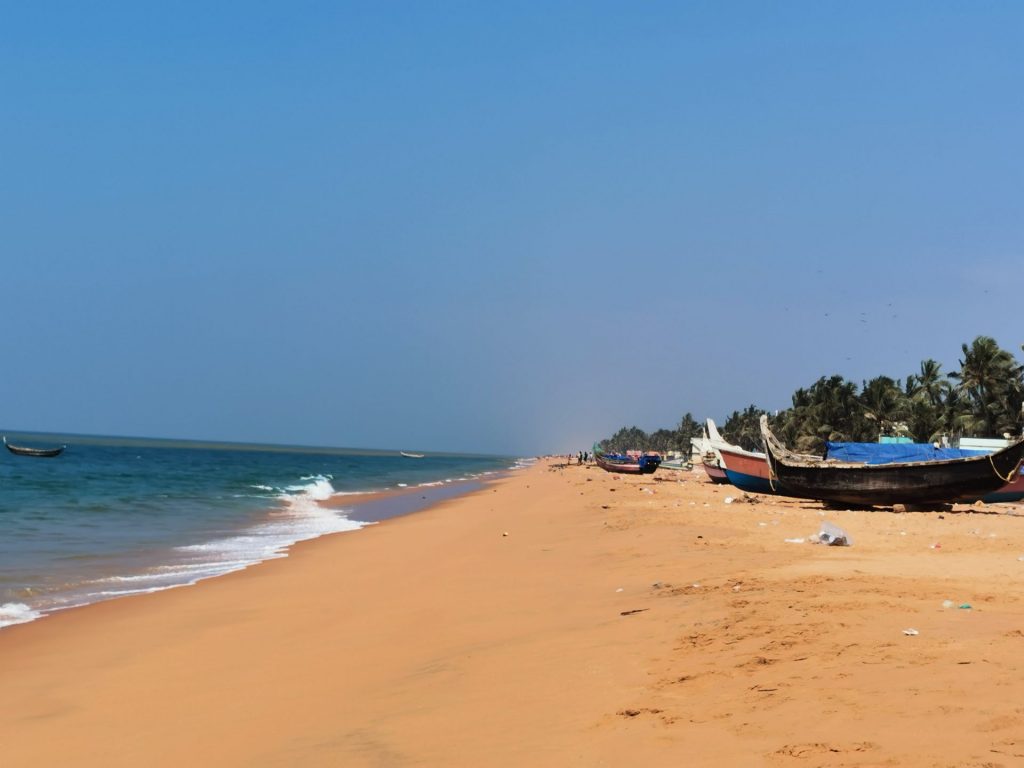The Emirates flight from Dubai lands in the dark early hours at Trivandrum (Thiruvananthapuram) International airport. A taxi from the nearby Santa Maria hotel fails to meet us. I leave Jo sitting on a bench reading the Lonely Planet Guide to India, and hang around in the crowd where I eventually hotspot off a rickshaw* driver’s mobile and speak to Bijoy, the hotel owner, who informs me that the taxi is parked up in bay 5 and the driver is patiently waiting for me. Of course he is. This is a useful introduction to the erratic ways of India I’ve forgotten. We pile into the taxi and I do a quick count of our bags – four – soon to rise to five. But the bag count fails to recognise that Jo has left the India guide on the bench – never to be seen again.
*rickshaw is short for auto rickshaw, a motorised three wheeled covered vehicle with a driver up front, two passengers in the rear (I’ve seen at least four) and baggage behind or on the roof. Based on the hand pulled rickshaw now only ever seen in Calcutta.
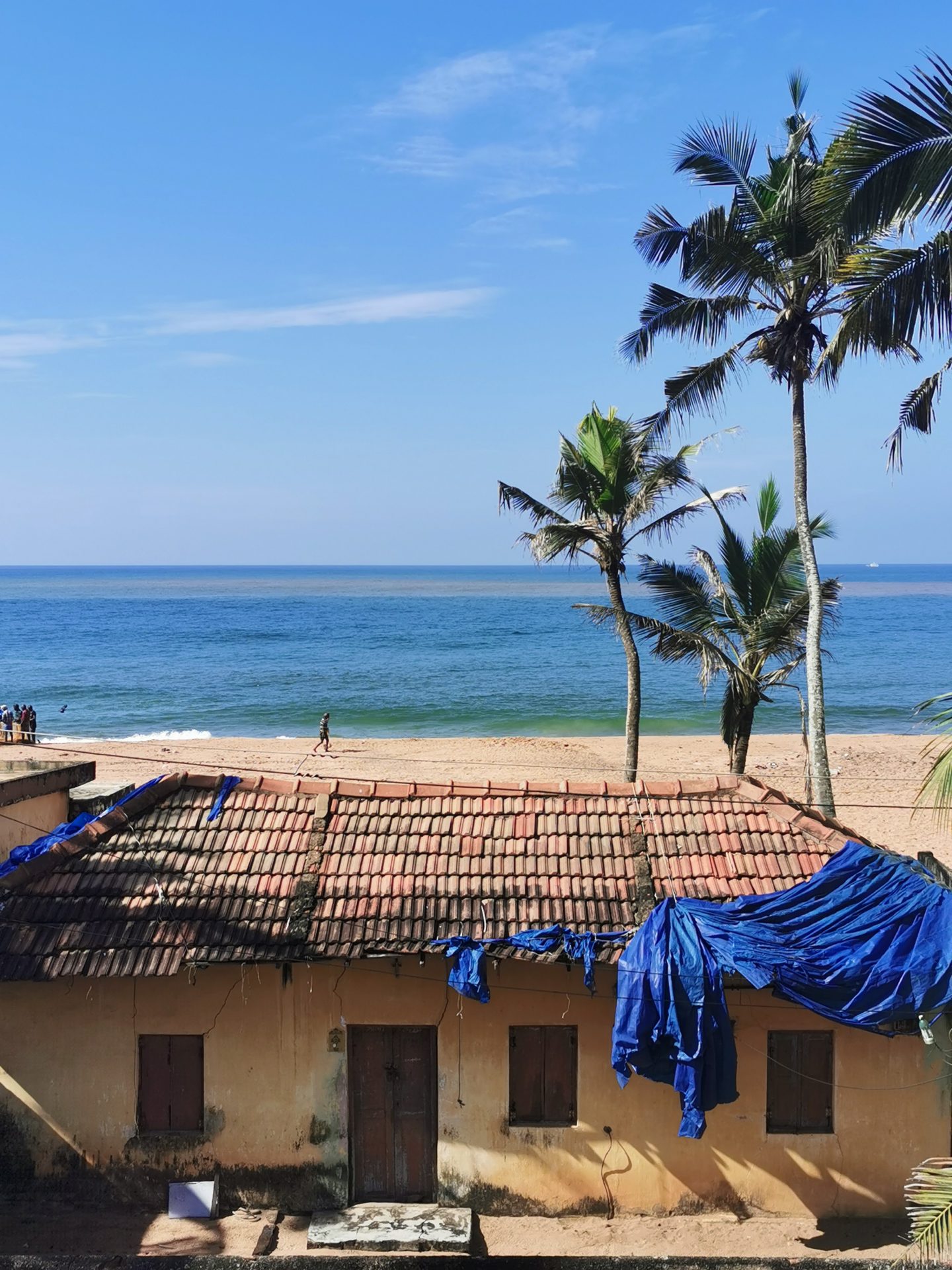
We can see and hear aircraft as they take off and bank over the ocean to the west but the hotel oozes a sense of rural India. The view from our bedroom window is of an abandoned cottage on the golden beach and the blue Laccadive Sea. The food is genuinely home cooked and delicious. But it can’t be left unattended for a moment as the local thieving crows have their eyes on it and snatch what they can get away with when you briefly go to refill your water glass.
It is late morning and we negotiate a meandering narrow lane between small cottages to the beach. It’s a beautiful stretch of sand despoiled by the usual array of rubbish. A storm (a small tsunami?) has torn up a formidable concrete road alongside the beach and destroyed most of the adjoining properties, but some residents, having nowhere else to go, are living on in the ruins.
We can hear chanting. In the distance is a group of men pulling a line out of the ocean. As we approach I see that they’re rhythmically hauling a heavy net ashore. I count 28 men. In the water, at the head of the net is a fisherman clinging to a float – what his role is I do not know. We watch them for half an hour until the net is on the beach. The chanting stops and the fishermen gather around their haul. The net is empty and the men are deflated and disperse in silence. It’s a sad and futile moment – so much team effort for no reward.
It is the feast of St. Sebastian – an Italian martyr saint venerated by the Catholic church. In mediaeval times, he was regarded as having a special ability to intercede to protect from plague. Devotion to him greatly increased when plague was active so his popularity has peaked since the Coronavirus pandemic. As a consequence of the imperial Portuguese, the local population is Catholic and the church of St. Sebastian is up the road. To celebrate the feast day this evening, Bijoy and his wife Alina have invited us to join them and the community at large for a procession through the neighbourhood. But this will not be a jeans and T-shirt affair. Jo has been given a sari and I will wear a veshti – a formal type of lungi or sarong. After sunset a local woman, armed with pins and an electric hair straightener (for crisp sari pleats), arrives to dress Jo – who looks fabulous in a sari. We accompany Alina to begin what will be, as a member of a two mile long procession, a four hour walk along the fairy light illuminated main street, past several churches and shrines. There are thunderclap fireworks, prayers over loudspeakers, percussion and brass bands, multicoloured flags and umbrellas. It’s a Christian festival in the spirit of Diwali.
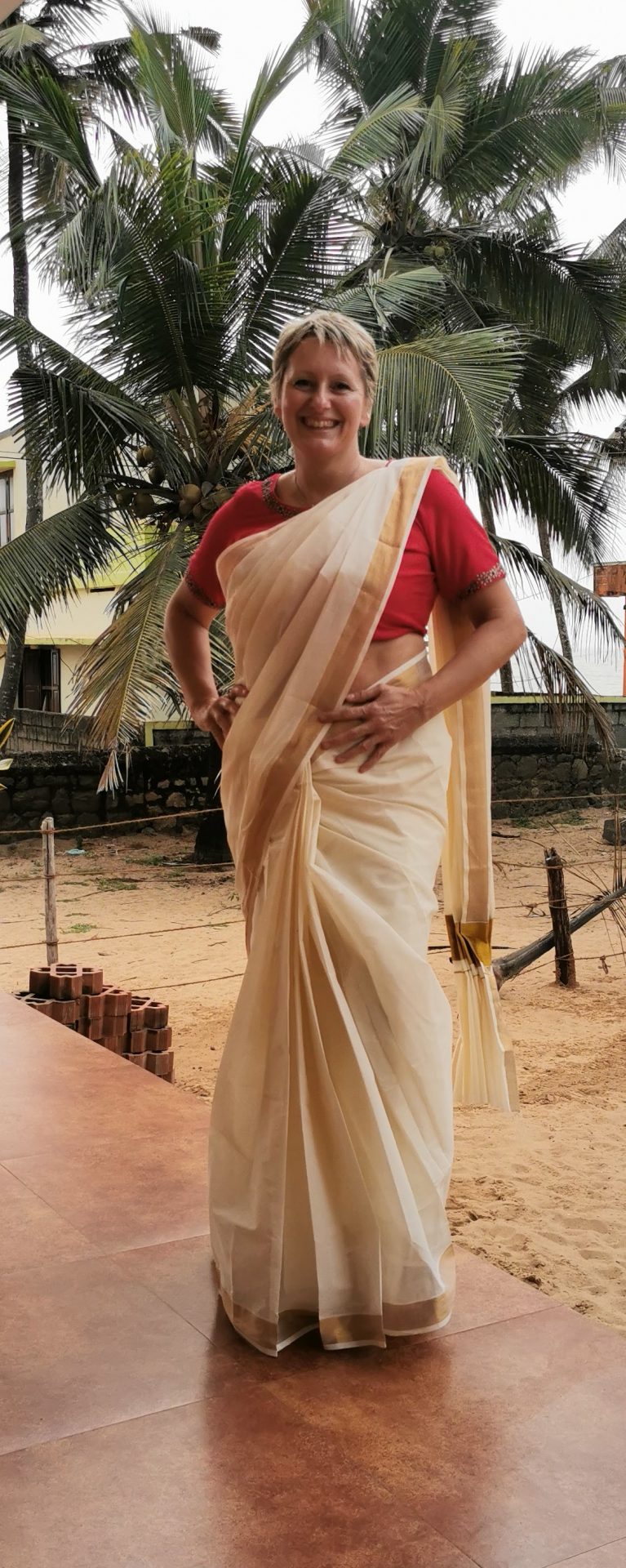
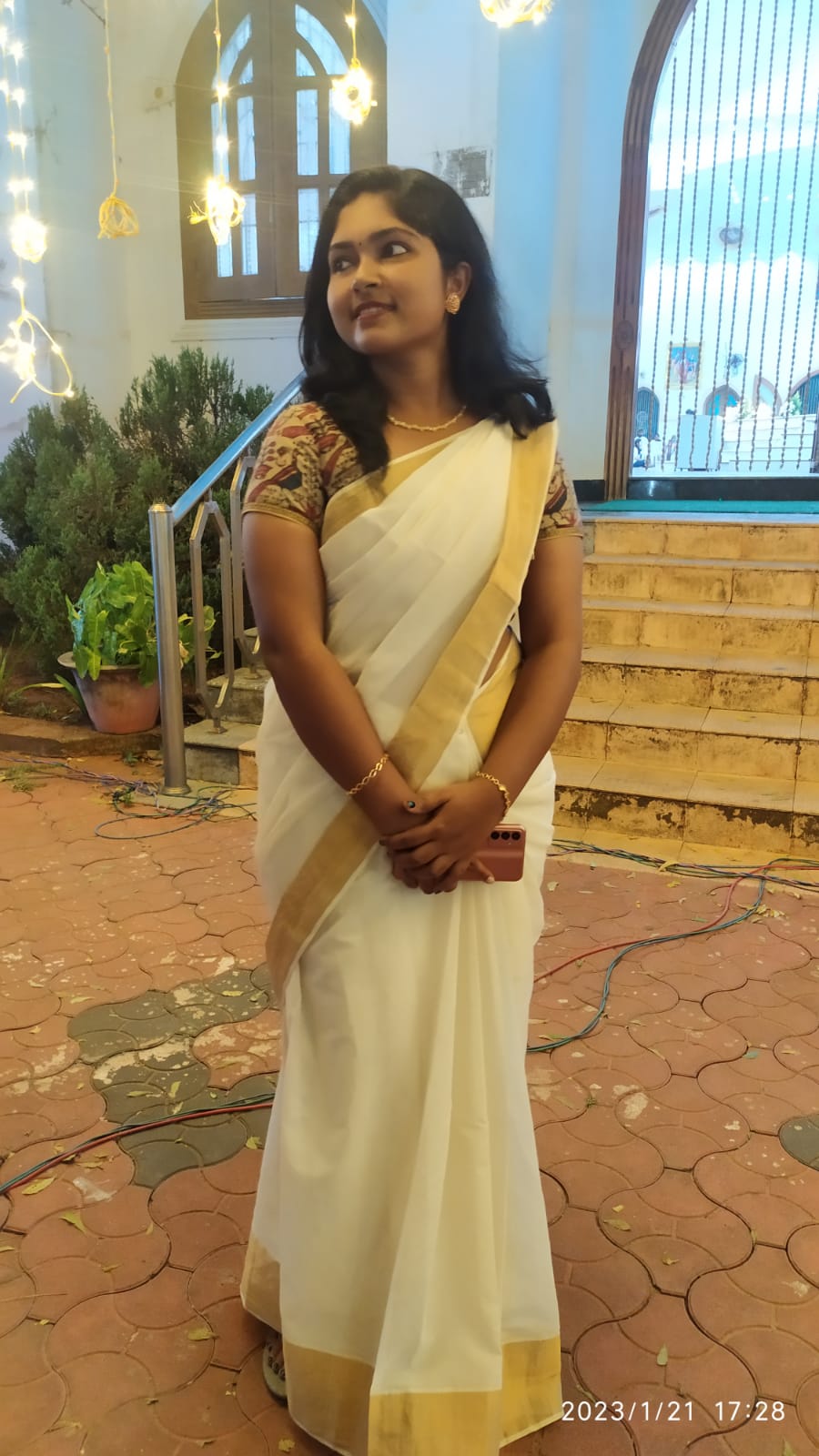
This is the first of several, radically different festivals that we’ll stumble into over the next two and a half months. We don’t have a fixed travel plan other than to meander around south west India. Jo has it in her mind to fly to Delhi to visit the Taj Mahal but for reasons that will become clear this won’t happen. If we like a location we’ll stay and explore. If we don’t we’ll move on. The general idea is to travel north along the coast to the backwaters of Kerala then north again along the western facing slopes of the Western Ghat mountains and the relative cool of the hill stations, coffee and tea plantations. We’ll push on yet further north into the state of Karnataka and the ancient city of Hampi, then west to Goa before we finally turn south along the coast to the remote beaches of Gokarna and back to Trivandrum. It’s a round trip, with diversions, of about 2,000 miles. Ten weeks will encourage a gentle pace, although gentle is perhaps not the right word. Transport over long distances will be by bus or train – taxi if we’re feeling feeble. Short hops will be by auto rickshaw. Slow, jolting and lurching is perhaps a better descriptor.


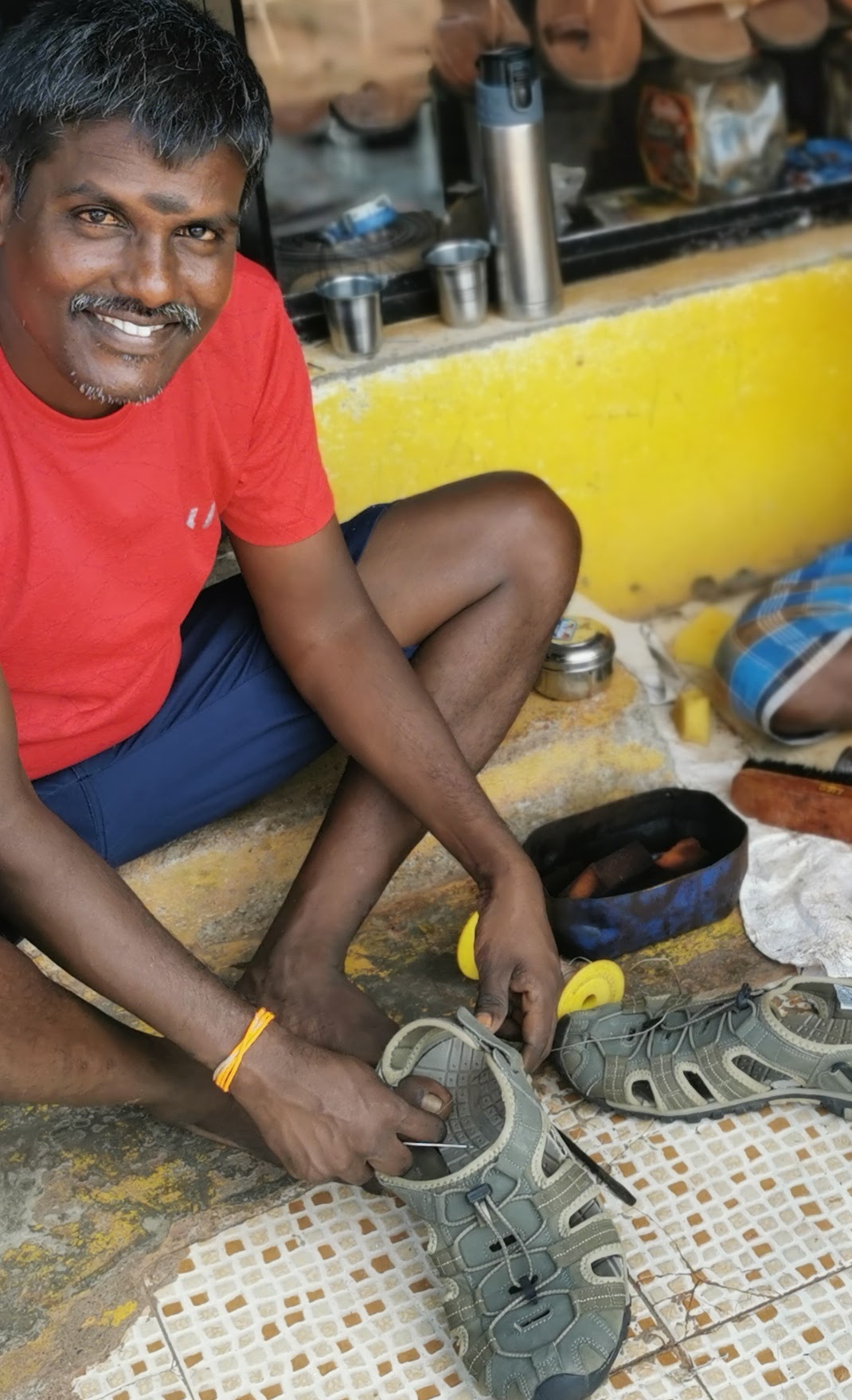
An hour north along the coast is the resort of Varkala beach. Jo’s first impressions of India are overridden by her despair of the filth and poverty and the starkly contrasting tourist world of vegan food, meditation, yoga, and ayurvedic massage. The most charming beaches, lakes, rivers and mountains are utterly ruined by discarded plastic, food and packaging. Indians are great at creating and ignoring this pollution – to an extent we’ll get used to ignoring it too. As in the UK they’re very good at inventing meaningless cheesy dictums such as, ‘Eco Friendly View.’ or ‘Green Revolution. The Best Solution. To Stop Pollution.’ or simply ‘Say No To Waste.’
It’s only day four and my sandals are disintegrating. I find a cheerful cobbler who stitches the soles for £5 after which we hire a rickshaw to take us to the Kerala State Liquor Store. The sale of alcohol in Kerala is strictly controlled by the ruling Communist government. Is this for financial or ideological reasons? Ironically Kerala has the highest per capita alcohol consumption of any state in India. The State Liquor Store is a dark unwelcome cage – an interesting but unpleasant retail experience. I’ve done my research and I’m after a bottle of ‘8pm’ whisky but they don’t sell it so I settle for a bottle of Indian Signature; ‘Fruity, creamy, complex, balance of wood.’ it says on the label.
At the end of Varkala beach, next to a simple Hindu temple, is a popular stretch of beach where Hindu families scatter the ashes of the deceased into the ocean. Some of the ashes are moulded into edible balls and fed to the crows. Amidst the rubbish on the beach I find a waste bin – it’s empty.
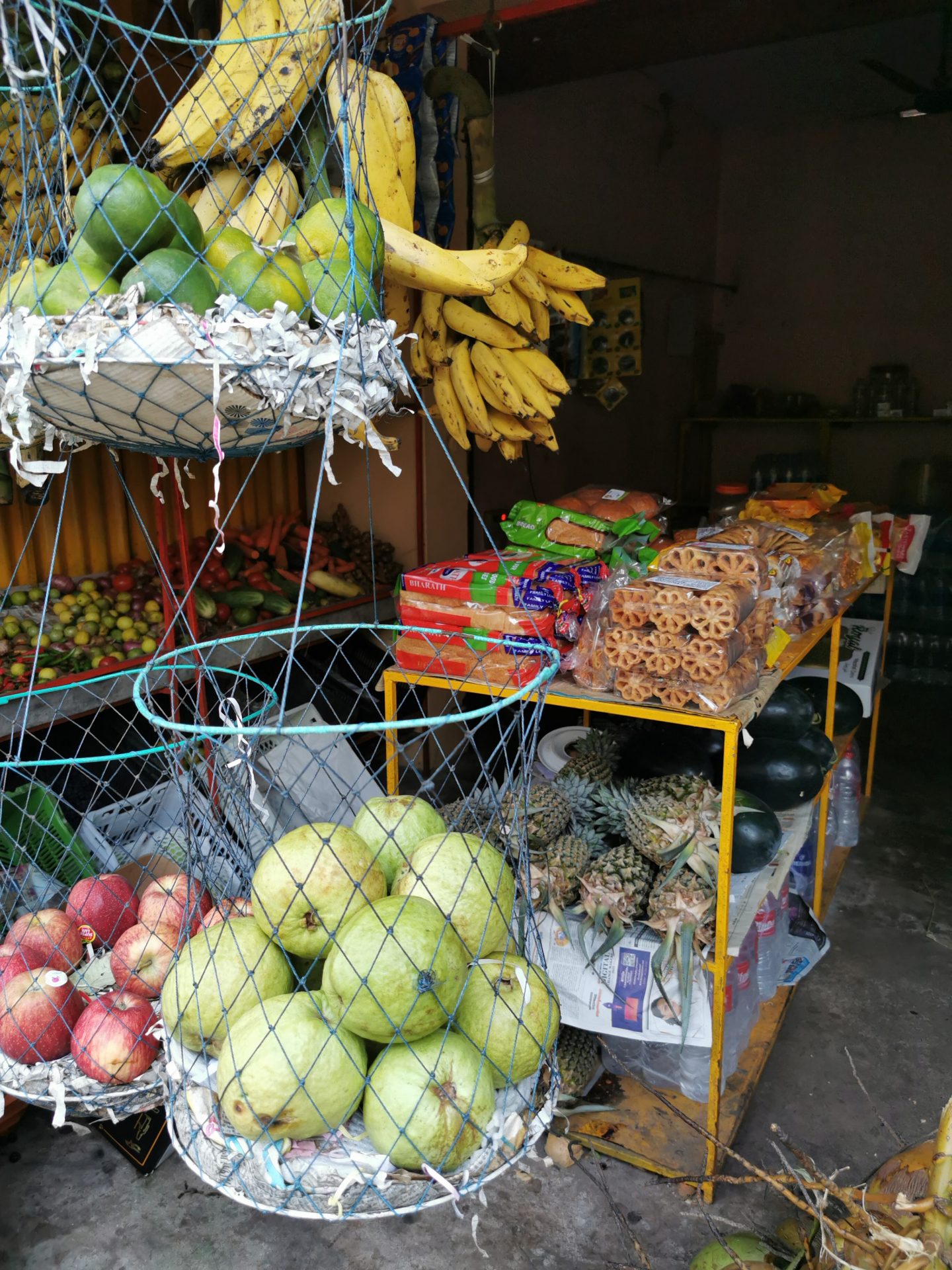

A mad taxi driver hurtles us towards Munro Island in the Kerala Backwaters. The British motoring journalist James May has just written a piece in The Spectator headlined ‘Cycle Wars. Why 20mph is plenty for motorists.’ He’s fundamentally right because if you can manage anything like as fast as 20mph in any UK metropolis you’d be happy.
He goes on to write about the crazy proliferation of lights, signs, warnings and street furniture that attempt and fail to enforce the limit. What’s needed, he says, is a change of attitude where pedestrians and people on two and four wheels will respect each other. He’s right there too but it’s fantastical to believe this will happen any time soon.
Metropolitan driving in the UK is now an angsty miserable experience characterised by anxiety, haste, impatience, rudeness and rage. In Denmark and the low countries all types of vehicles: cars, trams, buses, bicycles, motorbikes, pedestrians, and latterly e-scooters all share the same road space with seeming equanimity. Not so in Britain where the attitude is egotistical and many harbour a sense of entitlement – none more so than the speeding cyclist.
Here in India, drivers seem to have developed an incredible karma of the road. Imagine Kensington High Street with cars, trucks, bicycles, scooters, motorbikes, auto rickshaws, pedestrians, stray dogs, friendly semi-feral grey pigs, an occasional wandering bullock.
Now remove the central white lines, the road signage and any overtaking restrictions. Without some improbable weird change in Londoners’ attitude, there would be carnage. But in India, that’s how, despite the occasional shocking near encounter at which Indians laugh with relief and triumph – it works. And the number of victims per 10,000 population is lower than Europe.
The apparent anarchy of the road in India – to be in it – is extraordinary. Given the density of traffic, the speed (20mph) is remarkable. Overtaking is mandatory, with vehicles racing toward each other in a ‘play chicken’ scenario. It’s certain death, or worse, life changing injuries, but at the last moment, to the tooting of horns, they diverge. Unlike Brits who are enraged by it, Indians respect the horn, with ‘Sound Horn’ bumper stickers on rickshaws and trucks. Horn tooting raises awareness and alertness, especially in the age of the silent e-vehicle. Perhaps we could learn something from this
Junctions in India are fantastic. Vehicles approach onto major from minor roads with a few short sharp toots of the horn. And sometimes, contrary to common sense, they don’t wait for a gap and merge but make a gap by merging. Size matters – big trucks are controllers and rickshaws swerve about like flies. On major junctions you occasionally see a reluctant cop nonchalantly waving traffic through where he encourages momentum and is often ignored. I’ve yet to encounter an Indian driver who shouts insults or puts down other drivers. And I don’t see that many damaged vehicles.
Munro Island (named after a revered Victorian Scot: Colonel John Munroe) is a group of eight inland islets at the confluence of Ashtamudi Lake and the Kallada River, in Kollam district, Kerala. These backwaters of Kerala are supplied with water from the Western Ghat mountains. Over the centuries the rivers and lakes, set amidst mangroves, palm trees, coconut and pineapple plantations, have been integrated with canals and water channels. With the exception of religious incantations and imprecations constantly broadcast over loudspeakers and the ever present angle grinder, it’s very serene.
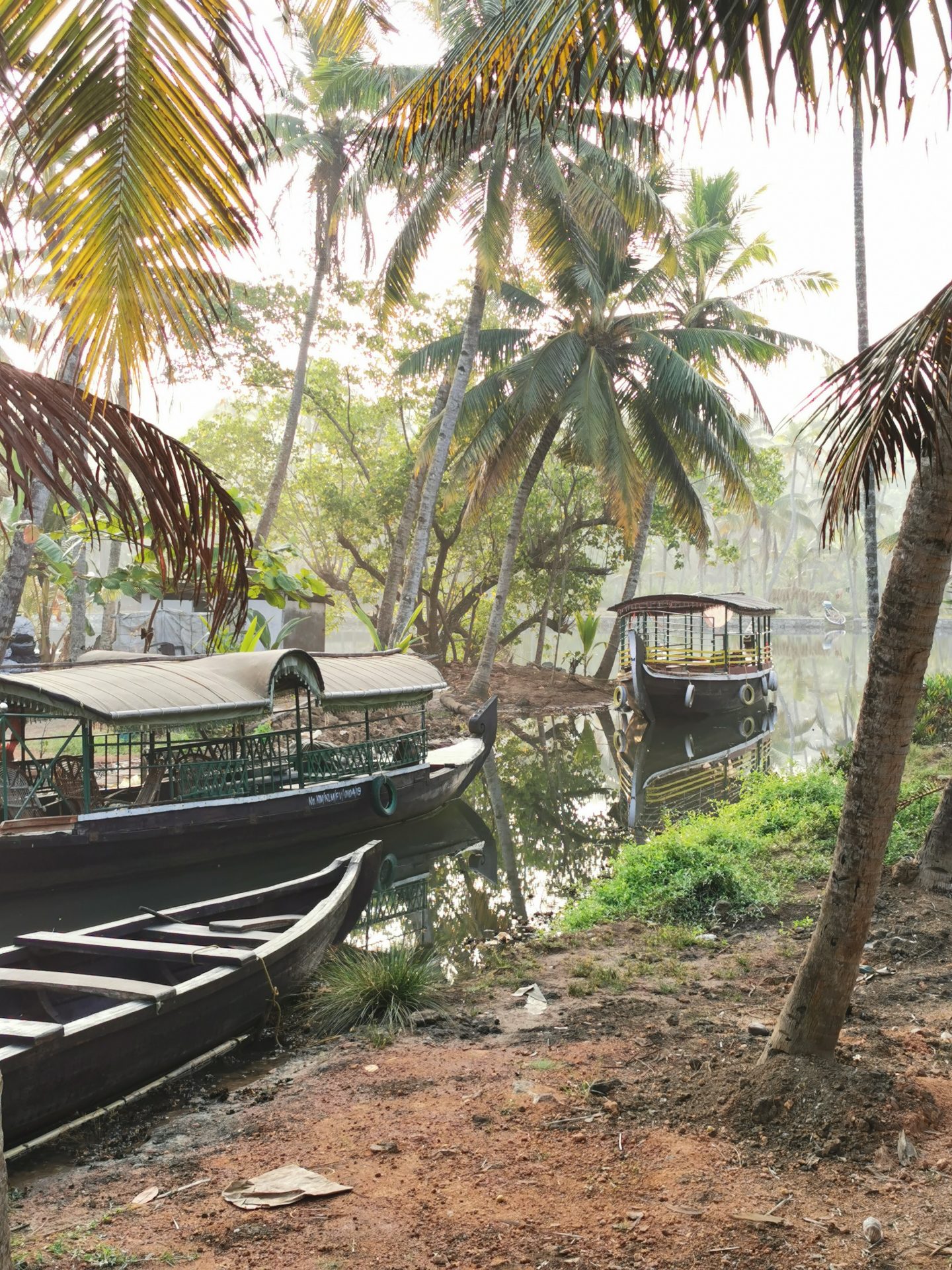
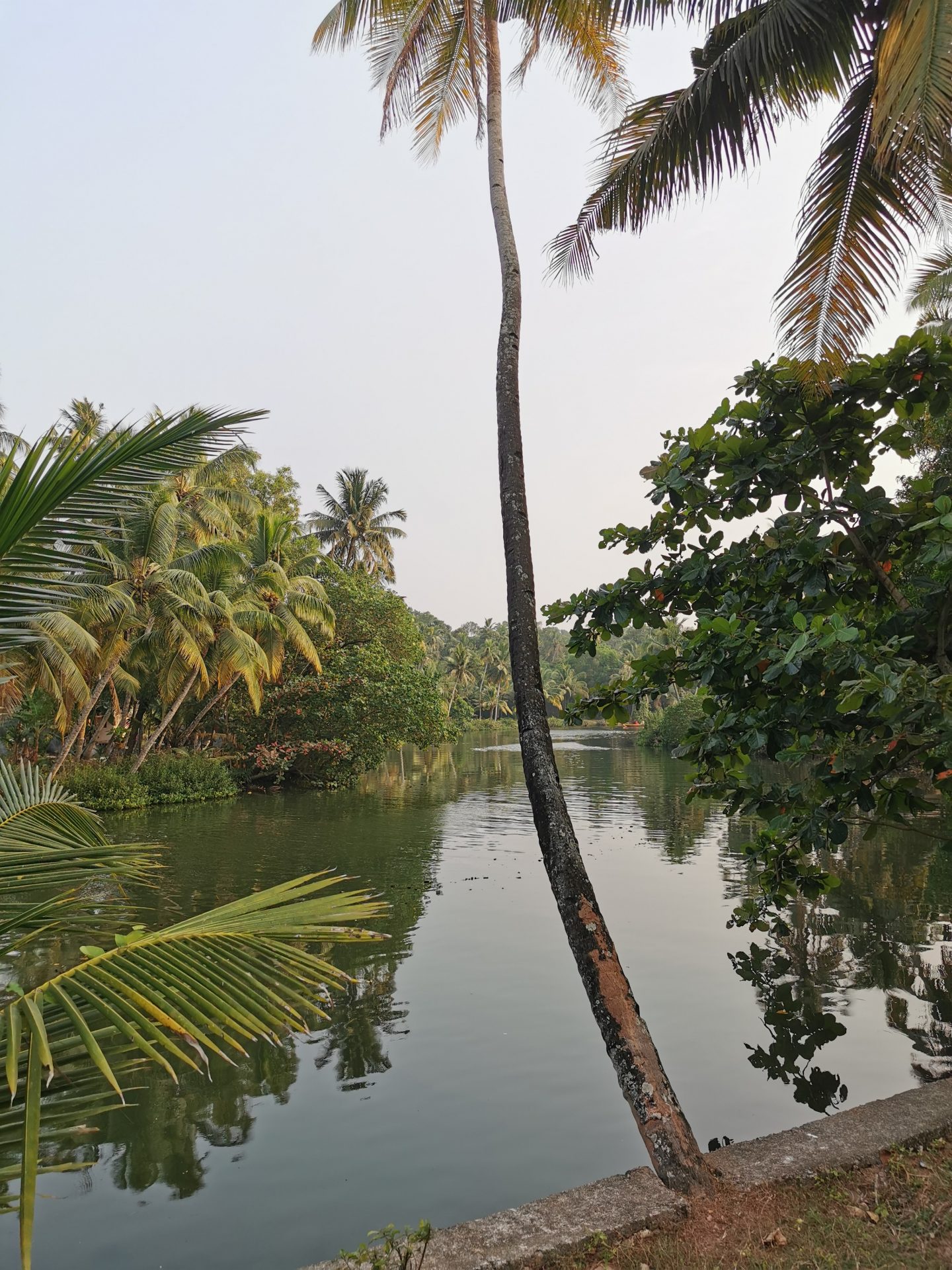
Our canalside hotel is grandly named the Royal Munroe Palace. But the name is deceiving – it’s a very simple bed and breakfast where English is barely understood. We explore the backwaters on foot and spot the kingfishers and egrets.. In the mornings and late afternoons, the weather is like a fine English summer’s day. We drink fresh coconut milk and long, iced, fresh lime mocktails. The locals are the Mundrothuruthu people – we spend hours just watching them going about their daily lives on and around the water.
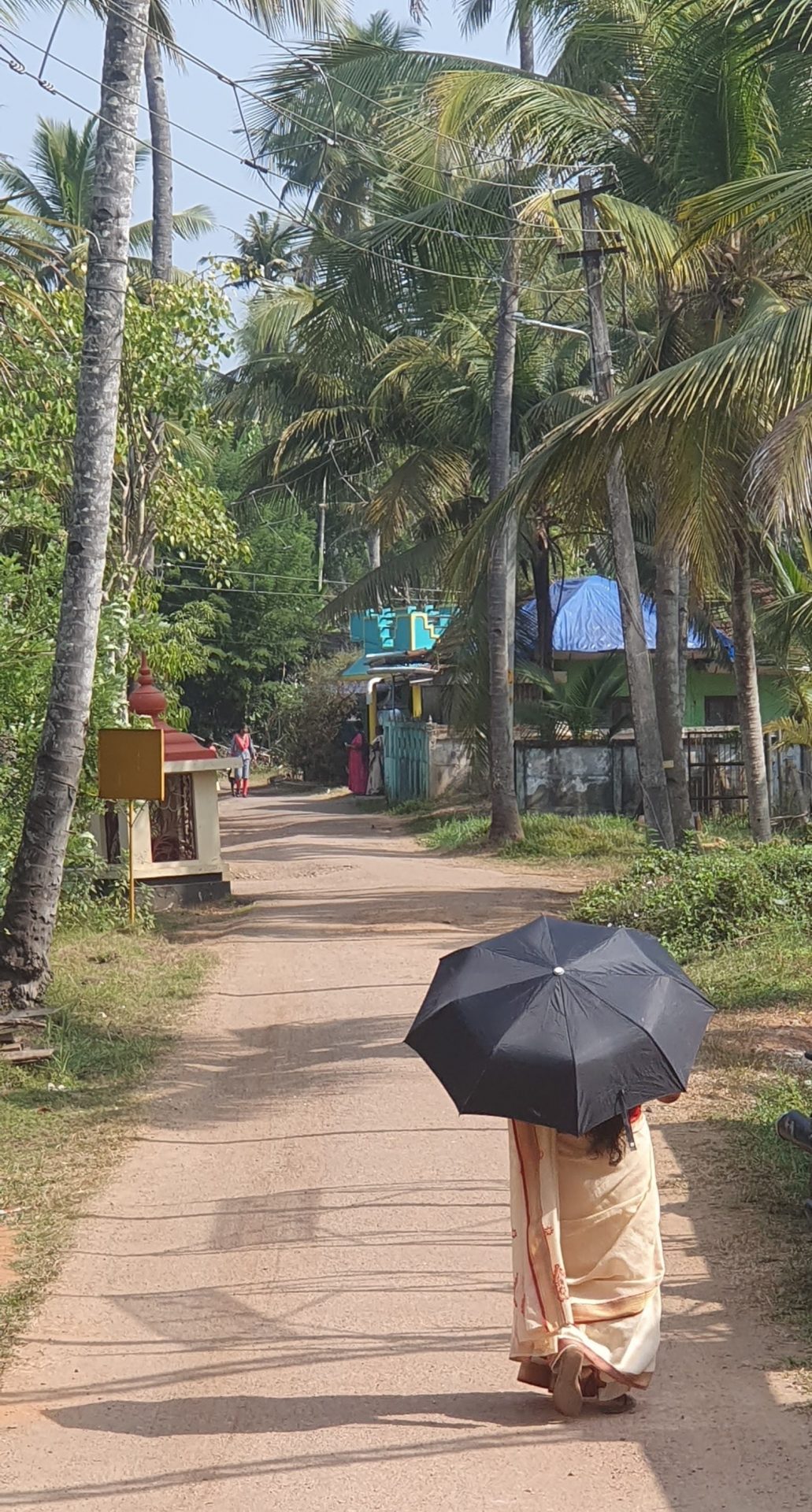
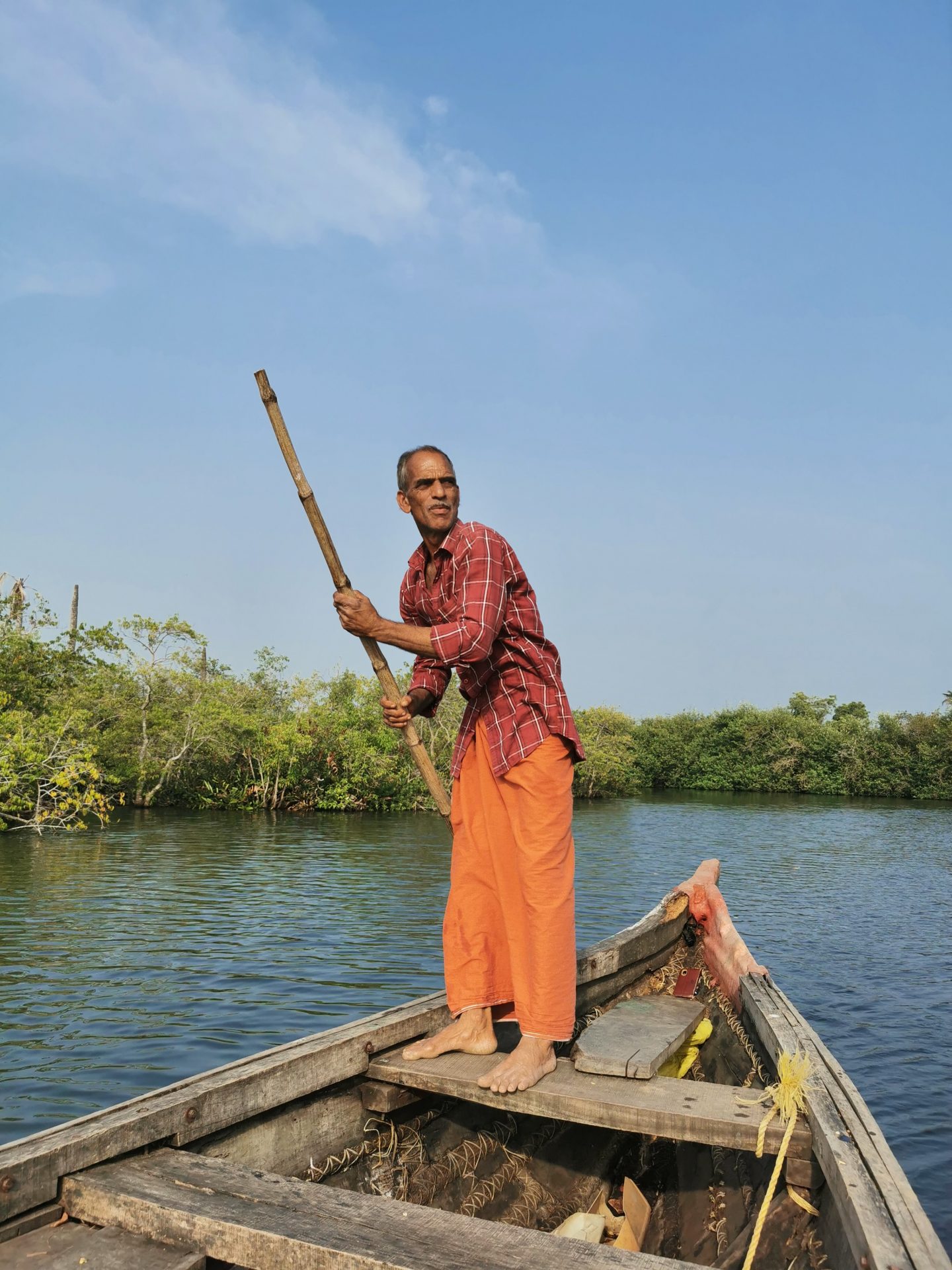
Our first train journey in India is the 12.47 from Kayamkulam Junction to Alleppey – a two hour journey costing 40p. We heave our baggage across the tracks to get to platform 2. We travel second class non A/C. There’s no glass in the metal barred windows and the doors are generally open so, as long as the train is moving, it’s cool enough. This train is just 15 minutes late and it’s half empty. Jo boards first and locates a seat whilst I load the heavy bags and store them next to the toilet. For the first forty minutes of the journey I remain at the open carriage door – if I can it’s a location I’ll seek out on every train we ride.


For the next stage of our Indian journey please visit Alleppey to Kochi, Kerala State
